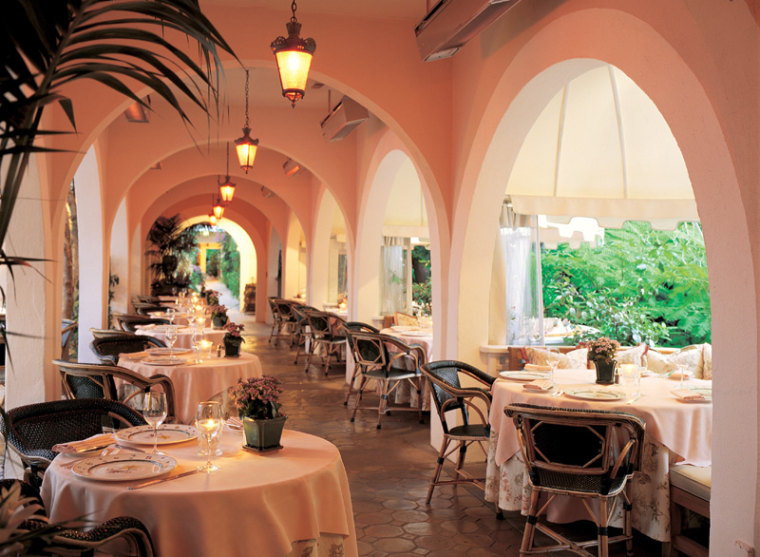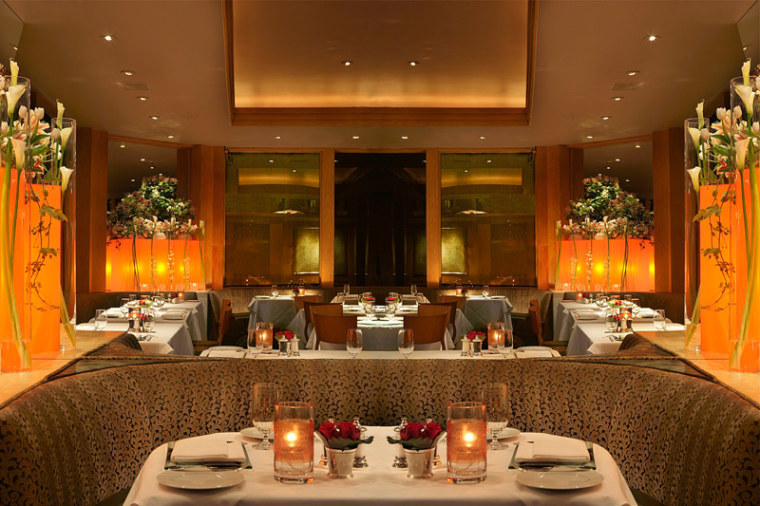A business meal is not to be entered into lightly. At its most basic level, the food is only a small part of the package, and the atmosphere and service care far more important to the meal’s end—which is, by definition, the conclusion of a business meeting. One hopes it is a successful one. For that reason, the choice of restaurant is crucial for the host. Certain restaurants are completely wrong for a serious discussion—too loud, too large, too fancy or too trendy. Others that have reputations for being “power lunch” spots may be so clubbish—even during the evening hours—that you feel like an intruder.
Not too long ago, the “three martini lunch” was not an idle metaphor. American businessmen really did their business over a meal that began with cocktails (plural) and ended with Cognac. No longer. Many corporations prohibit their executives from imbibing any alcohol, which is why, even in the big-time power lunch spots like `21’ Club in New York or Spago in Beverly Hills, most businesspeople are drinking iced tea or bottled water with a slice of lime. To be hard-nosed at a business meal means not being soft-headed at the bar.
The late master restaurateur Claude Vrinat, owner of the illustrious Taillevent in Paris, once told me that a decade ago his business guests would always come three times with their clients, always ordering Champagne, white wine, red wine and brandies. The first time they would not even discuss business, the second they inch close to the deal and the third was celebratory.
“These days are over,” he said. “Now they come once and may not even drink a glass of white wine.”
The so-called “power lunch” was coined in a 1979 article in Esquire about the business titans from New York’s fashion, media, arts and investment community who dined in the Grill Room at The Four Seasons several days a week, complete with a seating chart of who sat at which table. Today, according to the restaurant’s managing partner Alex von Bidder, not much has changed.
“The key to any successful business transaction is to do your homework,” he says. “You want no surprises. I would never go to a restaurant without knowing the layout, which tables are available and which are saved for regulars. My advice is to become a regular at two or three restaurants.”
Would that Ashley Ferry, director of national sales for Boston Coach, a global transport company, heeded that when he recently took a major client from Chevron Oil out to a quiet restaurant in San Francisco. “Because of traffic I was 45 minutes late, and they refused to sit my client until I got there, and even then we had to wait another 20 minutes. Had I been a regular, that would not have happened.”
Certainly on any given day the businesspeople at The Fountain at the Four Seasons Hotel in Philadelphia are well-known to the staff and, in at least a nodding sense, with each other. Indeed, lunching at The Fountain is a good way to see whom your competitors are courting.
Steakhouses have proliferated in the U.S. principally to court businessmen, for whom such places are always a safe choice for an assemblage of staffers and guests. And chains like Smith & Wollensky and Morton’s are not likely to hold any negative surprises. The problem is, most chain steakhouses are very loud, often overbooked and change their managers and maître d’s frequently. I once arrived for my 7 o’clock table at NYC’s Sparks Steakhouse only to told, “Everybody’s got a 7 o’clock reservation. Have a drink at the bar.” It’s smarter to take a client to an independently owned steakhouse, like Al Biernat’s in Dallas, where Al himself is the owner, manager, maître d’ and, after one visit, your most valuable asset.

Indeed, getting to know a maître d’ is crucial in ensuring things will be the way you want them to go. New York’s Le Cirque is such a high-powered, popular restaurant with the city’s society, fashion and banking crowd that becoming a familiar face to the restaurant’s affable maitre d', Mario, is essential. It wouldn’t hurt to get to know one of the owners either—Siro Maccioni and his sons Mauro and Marco—on a first-name basis.
Computer reservations systems have been getting to know you as well, so that if you have been to a restaurant recently—even a year ago—there will be detailed information on where you sat, what preferences you expressed, what complaints you had, even what kinds of wines you drank. It’s a system used by restaurateur Danny Meyer, who literally wrote the book on service, "Setting the Table: The Transforming Power of Hospitality in Business" (2007). At his New York restaurants Eleven Madison Park and The Modern, the moment they pick up the phone they can get vital information on you while you’re making a reservation.
On the other hand, sometimes avoiding well-known restaurants is the wiser course. “Depending on the client, he might not want anyone to know he’s meeting with you,” says Gary P. Cuoco, a consultant in mergers and acquisitions. “Then I pick a place where I am definitely not known to the restaurant.”
